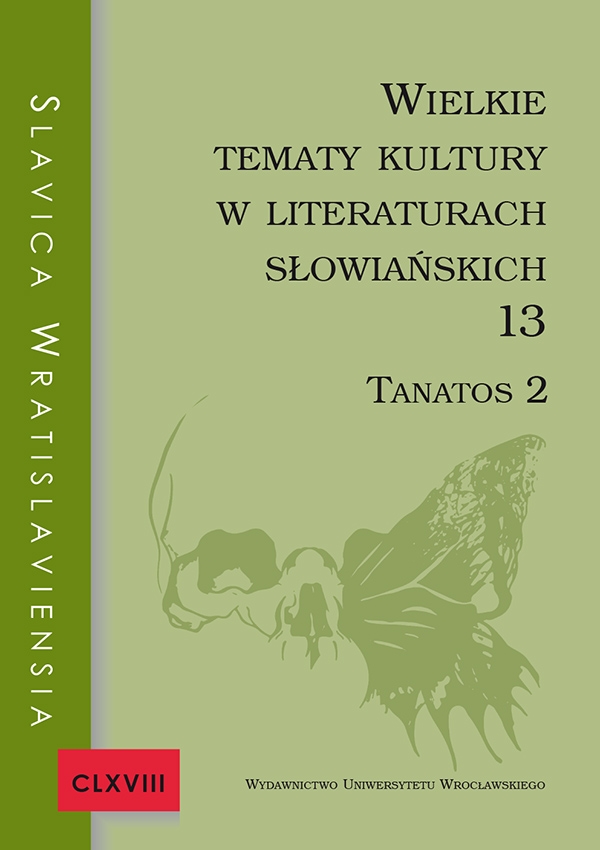

Literatury Słowiańszczyzny zachodniej

The stolen death: About the play Hledáme strašidlo by Hanuš Hachenburg from 1943
The puppet theatre play Hledame strašidlo by Hanuš Hachenburg was written in the Terezín/Theresienstadt ghetto in 1943 and over 50 years was hidden in the archive until it was presented to readers and viewers in the 1990s — but it turned out to be still surprisingly valid and cogent. The author, a 14-year-old prisoner of the ghetto, used the conventions of the puppet theatre, the carnival and the fairy tales. The mythical or fairy-tale-like “timelessness” allowed him to show the absurdity of Nazism and — yet unnamed — the Holocaust. The main character of the play, the King, captures Death itself, which soon becomes so ordinary and kitschy that no one is afraid of her. The confinement of Death — a motif known, among others, from the myth of Sisyphus — is an important theme of the theatre in Terezín; it appears also in the German-speaking opera by Peter Kien and Viktor Ullmann, Der Keiser von Atlantis Emperor of Atlantis. In this article, I show how the old themes of enslaved Death and the dance macabre between extasy and destruction become the symbols of the war, and indeed of the 20th century, which culminates in the devastating forces of the great ideologies and in which there can be found the origins of retrotopia, which is now, according to Zygmunt Bauman, the dominating point of view in East- and West-European and in American discourse.
Únos smrti. O terezίnske divadelnί hře Hledáme strašidlo Hanuše Hachenburga z roku 1943
Divadelní hra Hledáme strašidlo od Hanuše Hachenburga byla napsána v ghettu Terezín / Theresienstadt v roce 1943 a více než padesát let byla ukryta v archivu, aby v 90. letech si našla cestu pro své čtenáře a diváky — a ukázalo se, že je překvapivě platná a přitažlivá. Autor, čtrnáctiletý vězeň ghetta, využil konvencí loutkového divadla, karnevalu a pohádek. Mýtická nebo pohádková „nadčasovost“ mu umožnila ukázat absurditu nacismu a — tehdy ještĕ nemenovaného — holocaustu. Hlavní postava hry, Král, zachytí samotnou Smrt, která se brzy stane tak obyčejnou a kyčovitou, že se ji nikdo nebude bát. Únos smrti — motiv známý mimo jiné i z mýtu Sisyfa — je důležitým tématem divadla v Terezíně; objevuje se také v německojazyčné operě Petera Kiena a Viktora Ullmanna Der Keizer von Atlantis Císař Atlantidy. V tomto textu ukazuji, jak se staré motivy zotročené Smrti a danse macabre mezi extázi a zničení stávají symbolem války a celého dvacátého století, v který vyvrcholily ničivými sily velké ideologie a kde lze nalézt počátky retrotopie, která je podle Zygmunta Baumana dominantním hlediskem ve východním, západoevropským a americkým diskurzu.